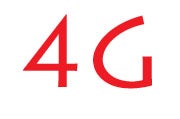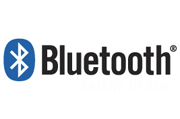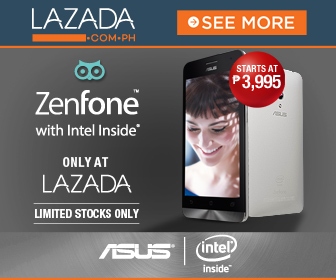csrnet@
 Ide menggunakan mudah tablet untuk menarik pekerjaan Anda. Anda dapat menggunakannya untuk email, mencatat, presentasi, mengakses Web, dan tugas-tugas bisnis lainnya - setidaknya jika Anda tidak tergantung pada spreadsheet kompleks atau masukan fisik. Tablet lebih mudah di mata daripada layar kecil smartphone, dan mereka lebih baik untuk Anda bawa daripada membawa laptop.
Ide menggunakan mudah tablet untuk menarik pekerjaan Anda. Anda dapat menggunakannya untuk email, mencatat, presentasi, mengakses Web, dan tugas-tugas bisnis lainnya - setidaknya jika Anda tidak tergantung pada spreadsheet kompleks atau masukan fisik. Tablet lebih mudah di mata daripada layar kecil smartphone, dan mereka lebih baik untuk Anda bawa daripada membawa laptop.
Jika Anda mencari informasi dasar tentang apa yang harus dicari dalam tablet, periksa konsumen tablet PCWorld yang membeli panduan. Tapi untuk tujuan bisnis, baca terus untuk apa yang Anda perlu tahu tentang memilih dengan sistem operasi yang benar, aplikasi, pilihan konektivitas, perangkat keras, dan banyak lagi.
Operating System
Ketika membeli tablet, hal pertama yang harus anda pertimbangkan adalah sistem operasi dan ekosistem aplikasi Anda membeli ke dalam. Saat ini, tablet OS perang memiliki dua pemain utama: iOS pada iPad 2 dan Android pada hampir segala sesuatu yang lain.
Juga dalam campuran, pada beberapa tablet, adalah Microsoft Windows 7. Papan tulis jendela belum sangat sukses karena beberapa alasan, namun sebagian besar karena Windows - apakah itu Windows XP, Vista, atau 7 - adalah OS yang optimal untuk suatu perangkat. Sementara Windows 7 tidak dirancang untuk tablet, ia melakukan pekerjaan yang lebih baik daripada Anda mungkin berpikir mendukung penyadapan dan menggesekkan, mengingat ikon kecil dan menu itu harus bekerja dengan. Dengan batu yang menerima input stylus, bekerja lebih baik. Kami berharap situasi ini membaik dengan kedatangan Windows 8 tablet yang akan memiliki jari-dioptimalkan Telepon Windows 7-seperti antarmuka Metro akhir tahun ini.
Terlepas dari isu-isu antarmuka, jika Anda menggunakan apapun aplikasi Windows vertikal, atau mengandalkan beberapa fitur Microsoft Office lebih dalam, Windows 7 slate hanya pilihan nyata Anda untuk penggunaan bisnis yang komprehensif.
Windows 8 tablet akan datang
Untuk penggunaan tablet secara umum, Apple iOS atau Google Android membuat pilihan yang lebih baik dalam banyak kasus daripada tablet Windows 7. Beberapa tablet, seperti Viewsonic itu, ViewPad 10 dual-boot untuk Android dan Windows 7. Jika Anda benar-benar ingin menikmati akses ke pasar dan semua aplikasi menyenangkan, couild ini menjadi solusi yang lebih baik daripada tablet 7-hanya Windows.
Applications
Dengan Windows 7, Anda dapat menginstal hampir semua aplikasi yang tersedia untuk itu OS. Untuk iOS dan Android, Anda lebih terbatas dalam pilihan Anda aplikasi bisnis, tetapi tidak sebanyak seperti yang Anda bayangkan.
Beberapa pembuat tablet, seperti Lenovo ThinkPad Tablet pada perusahaan, menawarkan VPN dan bahkan terpencil desktop Windows opsi (seperti Citrix Receiver) terpasang.
iWork untuk iPad
Adapun aplikasi produktivitas, iOS memiliki iWork untuk suite iPad, yang melakukan pekerjaan yang lumayan dengan dokumen, spreadsheet, dan presentasi yang kompatibel dengan Microsoft Office. Docs to Go dan Quickoffice adalah salah satu suite kantor yang tersedia untuk kedua iOS dan Android. Semua membiarkan Anda memuat, membuat, dan menyimpan Word, Excel, dan PowerPoint file, tetapi mereka memiliki keterbatasan. Misalnya, mereka tidak dapat menangani kompleks, makro-driven spreadsheet.
Sayangnya, aplikasi online seperti Google Docs dan Docs.com bukanlah solusi yang bagus untuk tablet yang mereka bisa - setidaknya tidak melampaui pengolah kata dasar. Dalam prakteknya, mereka hanya terlalu keyboard dan mouse berorientasi untuk digunakan secara efisien pada tablet
Keyboard, Mouse, and Stylus
Of course, dragging a keyboard and mouse around with you begs the question, "Why didn't I just buy a laptop?" But if you type a lot, you'll need a real keyboard. Using peripherals with a tablet isn't as zany an idea as you might think--after all, those tools will make certain tasks easier, and you'll still have the tablet to use as such when you're not employing them.
The $69 Apple Wireless Keyboard and Logitech's $70 Bluetooth Tablet Keyboard for iPad 2 and for Android (3.0+) are decent units that won't weigh you down too much. Logitech also makes a $130 folding keyboard that travels a little more compactly, and the company's $100 keyboard/case for the Samsung Galaxy (10.1 inches) is another workable solution. With Windows 7, a portable mouse is a good and necessary accessory. Navigating its non-finger-optimized interface is difficult at best without it or a stylus. Any of a host of USB (including wireless) and Bluetooth mice that work on laptops and desktops will work just fine on a Windows 7 tablet.
Digital Pens
Most tablets, like the iPad, have a capacitive touchscreen, which senses input from conductive materials, such as a living finger. These will work only with your finger, or a chunky capacitive stylus. But for serious drawing or for taking handwritten notes, you'll need a special pen-and-tablet combination.Many of the business-focused Android and Windows slates come with active digitizer technology--which requires an electronic pen--in addition to the capacitive touchscreen. An active digitizer lets you lay your hand on the screen without interfering with the pen's input, and increases accuracy and pressure sensitivity.
N-Trig-based tablets are great for those who do a lot of handwriting or a little drawing. N-Trig’s Duo Sense dual pen and touch-active digitizers are found in Android tablets with N-Trig’s digitizer, such as the HTC Flyer and Jetstream and the Lenovo ThinkPad Tablet. N-Trig-based Windows slates include the Fujitsu Q550, both the HP Slate 500 and the newer Slate 2, and the Motion CL900.
Each of the Android tablets comes with special note-taking software, such as Notes on the HTC tablets, and My Script Notes Mobile on the ThinkPad. However, if you want to do more drawing, you’ll want to check out Wacom-based Windows slates like the Asus EP121 or the Samsung Series 7. Wacom pens will not work on N-Trig tablets, and vice-versa.

Connectivity and Ports
Wi-Fi: All tablets have Wi-Fi. However, not all have 802.11a, the 5GHz band traditionally used by businesses. 5GHz is also used in newer dual-band consumer-grade routers and can result in a better connection, simply because there are fewer devices using it.The iPad 2 supports 802.11a, as does the Samsung Galaxy Tab 10.1, but many others do not. This is a feature some business users might need to connect in their offices.
Broadband: An increasing number of tablets have wireless broadband. Some iPad 2 models provide 3G broadband connectivity to either AT&T or Verizon and on a month-to-month basis--no service agreement. Samsung's 4G Galaxy Tabs, Motorola's 4G LTE Droid XyBoards, and others sold by providers also offer broadband, but these models are on a two-year contract basis. Given the fast pace of change in tablets today, a two-year contract could be too long a commitment for a small business.

Bluetooth: You probably want Bluetooth if you have any intention of using a portable keyboard and mouse with your tablet. For connecting peripherals, 2.1 is fine. Few tablets lack Bluetooth, with the exception of some value-priced, consumer-centric models such as Amazon's Kindle Fire and Barnes & Noble's Nook Tablet.
USB: Whether you need USB depends on how you want to store and transfer files, and whether you want to leverage USB peripherals (such as a mouse, gaming pad, or keyboard). Apple's iPad lacks any integrated ports, though you can add one that will communicate with digital cameras for $30. Only a handful of Android tablets, including the Lenovo ThinkPad Tablet, the Acer Iconia A500, and the Toshiba Thrive, have full-size USB ports that will power an external drive. More common are micro-USB and mini-USB ports that won't.

Look for the same resolution in the rear-facing camera, which is handy for snapping photos and for capturing documents and business cards using a scanning or OCR app.
Storage
Many tablets lack removable storage, so capacity can be an issue. Applications, e-mail, word processing documents, spreadsheets, and presentations don't require much space. However, if you deal with lots of video, you might want to purchase a high-capacity tablet (the maximum today is 64GB, on a handful of models), or at least make sure you can expand capacity via a micro-SDHC card slot. Many Android and all Windows tablets allow you to transfer and access data directly from external storage devices such as a thumb drive or a USB hard drive.
Security
Security and data encryption are major issues for many business users, and for some companies, the lack of security will eliminate many tablets from consideration.Windows 7 has Bitlocker (Ultimate and Enterprise versions only) and numerous third-party apps that implement security; Android 3.0 ("Honeycomb") and later offers system encryption; and the iPad has encrypted everything stored on it since day one. Android 2.x does not encrypt and is still offered on many tablets--avoid those if you have data you need to protect.

Final Advice
A tablet can meet at least some of your business needs, but it's most likely going to entail some compromise in the way you work. If you have software that requires Windows, then you need a Windows tablet--no way around it. If you don't have that constraint, then the iPad and Android tablets are more finger-friendly options.sumber ; http://www.pcworld.com/article/249803/how_to_choose_a_tablet_for_your_business.html






![OPPO Joy [R1001] - White OPPO Joy [R1001] - White](http://www.bhinneka.com/Data/image_product/OPPO-Joy-[R1001]-White-SKU01214626_0-20140902134835.jpg)

![TP-LINK N750 Wireless Dual Band Gigabit Router [TL-WDR4300] TP-LINK N750 Wireless Dual Band Gigabit Router [TL-WDR4300]](http://www.bhinneka.com/Data/image_product/TP-LINK-N750-Wireless-Dual-Band-Gigabit-Router-[TL-WDR4300]-SKU00712872_0-20140417101429.jpg)

![ASUS Wireless-N Router [RT-N12HP] ASUS Wireless-N Router [RT-N12HP]](http://www.bhinneka.com/Data/image_product/ASUS-Wireless-N-Router-[RT-N12HP]-SKU00113615_0.jpg)
![ASUS Fonepad 7 [FE170CG] - Mica Black ASUS Fonepad 7 [FE170CG] - Mica Black](http://www.bhinneka.com/Data/image_product/ASUS-Fonepad-7-[FE170CG]-Mica-Black-SKU00614737_0-20140506151255.jpg)
















![ASUS Wireless-N Router [RT-N10U B] ASUS Wireless-N Router [RT-N10U B]](http://www.bhinneka.com/Data/thumbnail_product/ASUS-Wireless-N-Router-[RT-N10U-B]-SKU01112255-20140417090227.jpg)



![SAMSUNG Galaxy Camera 2 [GC200] - White SAMSUNG Galaxy Camera 2 [GC200] - White](http://www.bhinneka.com/Data/thumbnail_product/SAMSUNG-Galaxy-Camera-GC200-White-SKU00314420.jpg)
![SANDISK Extreme II Desktop [SDSSDXP-120G-G26] SANDISK Extreme II Desktop [SDSSDXP-120G-G26]](http://www.bhinneka.com/Data/thumbnail_product/SANDISK-Extreme-II-Desktop-[SDSSDXP-120G-G26]-SKU01213130.jpg)
![CORSAIR Memory Notebook 8GB DDR3 PC-10600 [CMSO8GX3M1A1333C9] CORSAIR Memory Notebook 8GB DDR3 PC-10600 [CMSO8GX3M1A1333C9]](http://www.bhinneka.com/Data/thumbnail_product/CORSAIR-Memory-Notebook-8GB-DDR3-PC-10600-[CMSO8GX3M1A1333C9]-SKU00911963-20140422104325.jpg)

![TP-LINK Outdoor Wireless Access Point [TL-WA7210N] TP-LINK Outdoor Wireless Access Point [TL-WA7210N]](http://www.bhinneka.com/Data/thumbnail_product/TP-LINK-Outdoor-Wireless-Access-Point-[TL-WA7210N]-SKU01413236-20140513114348.jpg)


0 komentar:
Posting Komentar